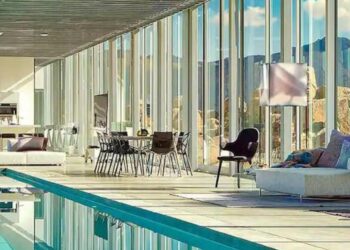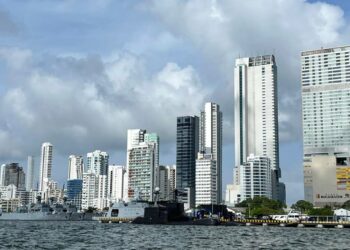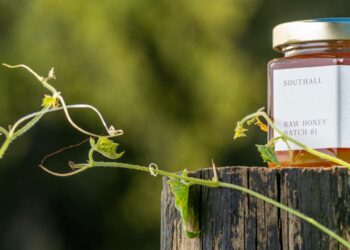Spain’s capital city Madrid has emerged as a European epicenter where rich history and monumental architecture collides with hip culture and gastronomy. Moving the needle are a new breed of experimental chefs, up-and-coming designers, and creative trailblazers inspired by the cultural mélange omnipresent throughout the city. On a recent trip, I meandered through the city streets to discover a new Madrid, a city that will pull as much at your heart as your appetite.
Stroll Madrid’s Diverse Neighborhoods

Much of Madrid’s culture can be discovered by simply walking along the neighborhood streets and mingling with the locals at one of the many inviting city squares. The city’s fusion of past and present becomes abundantly clear while exploring the grid of vast tree-lined boulevards juxtaposed by narrow alleyways, either on foot or via the easy-to-navigate transit system. Each vibrant neighborhood awakens the senses with a tempting tangle of shopping options and gastronomic eateries.
Historic City Center

Madrid’s rich history is a story that’s best told in the City Center in what’s known as the Golden Triangle of Art. From the 200-year old Prado Museum, whose walls are lined with masterpieces including Diego Velázquez, Bartolomé Esteban Murillo, Francisco de Zurbarán, and Jusepe de Ribera to the Thyssen-Bornemisza Museum whose global roster of artists spans the 13th to the 20th century. Named for Spain’s Queen Sofia, the Museo Nacional Centro de Arte Reina Sofía’s collection of 20th-century art, including works by Joan Miró, Juan Gris , and Pablo Serrano, completes the triangle. Also on the must-see list is the former military barracks converted to the Conde Duque Cultural Center, a lively hub that’s home to a cinema, concert , and exhibitions spaces within the 18th-century halls.
Green Spaces
Nearby, El Retiro Park provides a green oasis whose 124 hectares are filled with notable monuments, well-manicured gardens, and a greenhouse-like Glass Palace. During warmer months, the park’s lake is filled with rowboats as sunbathers flock to this urban sanctuary.
Royal Grandeur

Minutes away from Plaza Mayor, Madrid’s grand central square was reconstructed in 1790 by Juan de Villanueva and unaltered since is where you can set sights on the Royal Palace. Once home to Spain’s royal family and now used only for official ceremonies, visiting this regal address reveals centuries-old collections of paintings, furniture, and armor. Another noteworthy landmark is the Teatro Real of Madrid, once upon a time a leading theater in Europe. Inaugurated in 1850 during Queen Isabella I’s reign, there are fewer better settings in which to take in an opera.
Culinary Immersion Then and Now

Be sure not to miss the art nouveau iron masterpiece Mercado San Miguel, Madrid’s first food market dating back to 1916 offers a selection of cheeses and fresh produce from all over Spain. Stroll its plentiful stalls,to dine on local tapas including patatas bravas, gambas al ajillo and boquerones, as well as more innovative sweet and savory bites. The downtown Chueca neighborhood, with Plaza de Chueca at its center and named after Spanish composer and author Federico Chueca, tells its own culinary tales. Among the colorful restaurant-lined streets, where Baco y Beto modern tapas proves a favorite to locals and tourists alike, San Antón Market provides eclectic eats in a historic setting. Dating back to the 19th century and refurbished in 2011, this three-floor food hall boasts dozens of dining options, both Spanish and international, an exhibition center , and a spacious terrace from which to capture birds-eye views of the neighborhood. Some of Madrid’s best coffee can be sipped at modern Toma Café while bohemian-style Café Manuela, open since 1979, is a neighborhood institution. Weekends come alive on historic square Plaza del 2 de Mayo in the form of market stalls and outdoor cafes, bustling beneath the mid-day sunshine.
Fashion and Design Scene
At nearby Calle de Serrano, shop to your heart’s content along this 2-kilometer long luxury shop-lined street more commonly known as The Golden Mile. Trade fashion for history at the National Archeological Museum of Spain, founded in 1867. Shared with the National Public Library, this building was first used to store art collections from Spanish monarchs. In nearby Malasaña, street art provides the backdrop to a myriad of local boutiques and vintage shops, making it a favorite shopping destination for those in the know. North of El Retiro Park, Madrid’s elegant Salamanca barrio is home to one of the city’s most design-savvy new hotels. Bless Madrid welcomes visitors to plush five-star accommodations proving the perfect spot from which to take in all the sights, sounds and tastes of the city.
Open-Air Market

Sundays at La Latina, Madrid’s oldest and liveliest neighborhood constructed on the site of a medieval Islamic fort, set the scene for the city’s largest open-air flea market. El Rastro as it’s known to the locals, snakes along Plaza de Cascorro and Ribera de Curtidores. Everything from antiques to artisanal accessories can be found in this weekly held treasure trove. The maze of narrow streets surrounding El Rastro is also home to some of Madrid’s oldest, and tastiest, tapas bars. Casa Amadeo is famous for their escargot, while Bar Santurce serves freshly grilled sardines and little else. This is undoubtedly the place for a tapas crawl, Spanish style. For a more gourmet tapas experience with a modern twist, look no further than restaurant Juana La Loca.
Experience Flamenco
Flamenco originated in Madrid and the oldest locale in Madrid dating back to 1956, Corral de la Morería sets the stage with performances almost every day, famous performers among them. Another notable address, fit for the Queen of Spain and members of the Spanish nobility, is Torres Bermejas. After sitting back and enjoying the show, learn the soulful moves by taking a class at Casa Patas.
Sweet Goodbye
For a sweet end to your Spanish odyssey, head to Chocolatería San Ginés for churros and hot chocolate. This 19th-century establishment just off of public square Puerta del Sol, will no doubt leave a lasting impression of this multi-faceted city that wins every heart it touches.







